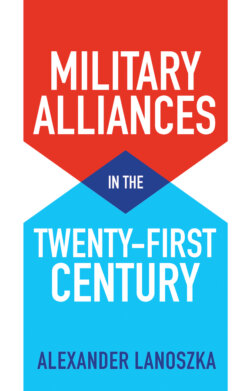Читать книгу Military Alliances in the Twenty-First Century - Alexander Lanoszka - Страница 13
Conventional wisdom #4: Military alliances aggregate capabilities and thus allow their members to confront security challenges more effectively
ОглавлениеRecall the earlier standard claim that one motivation for forming alliances is to balance against a shared threat. One implication of this claim is that states can see off their security challenges more effectively in unison with their allies, provided that they have some, than they would without them.
This view is plausible, but Chapter 5 argues that it is at best incomplete. Most, if not all, present-day alliances exist to prevent war, but no US-led (or even Soviet/Russian) alliance since the end of the Second World War has fought directly against its primary adversary. In fact, alliances generally do not fight wars – ad hoc arrangements like coalitions do. And when wars are fought or multinational military campaigns are undertaken, treaty allies often work alongside nontreaty partners in those coalitions to advance common, but usually not identical, goals. Their motivations for participating in those operations may vary, especially when their own alliance obligations may not be directly relevant to the campaign at hand. Moreover, capability aggregation hardly guarantees military effectiveness. One might think that alliances serve to aggregate capabilities, implying that the more military power and the more members there are, the more effective and successful these alliances would be against adversaries. However, strategic, organizational, and technical factors can create a range of problems that hamper the ability of coalitions in going about multilateral military operations as successfully as they would like. That said, military alliances may still be more effective fighting organizations thanks to the joint military exercising and standardization that can occur under their auspices, but that would not be because they simply aggregate capabilities.
